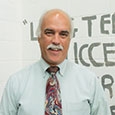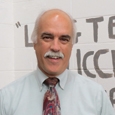One argument for music education is that it strengthens the neural pathways of the brain’s right hemisphere. Current neuroscience disputes the left brain/right brain dichotomy, but band as a means to nurturing creativity continues to possess great validity. You have a compelling case for better scheduling if you stress that music education is one of the best ways to develop and enhance creativity. If parents and administrators can be shown that one of the few ways creativity can be properly developed is through music education, then band, orchestra, and chorus will become a priority rather than an afterthought.
In Music Education of the Future David Whitwell makes a strong case for music as a key factor in brain development. He said we must learn to defend music in the curriculum “in terms of its unique contributions to the child as an individual. This would be altogether more advantageous to us in view of the fact that most of the rest of education is designed to educate only half a brain. How could we present society a stronger defense of music in the public schools than the fact that music educates the other half of the brain that the school board has overlooked . . . the fact that the half-brain that is virtually ignored in education is the half that is the real us should make a school board very uncomfortable.”
The importance of music as a nurturing force in developing creativity is echoed in Richard Floyd’s recent book. The Artistry of Teaching and Making Music. Floyd writes, “Music exists and remains indispensable because it is an essential element of the human experience. For me, it is the art of what we do that really matters.” He further states that the purpose of rehearsals is “to teach students to think, to make musical decisions, and to seek connections with life experiences that create a sense of artistic achievement . . . The continued refinement of essential skills merits our attention for one reason only: to serve the music.”
Floyd argues that teaching this way will result in musical performances that are art-focused rather than craft-focused or skill-based performances. The implications – and opportunities for teaching of creativity – are significant. A fascinating example of the creative approach to band occurred for us last fall and was inspired by my recent reading of Floyd’s book. We were rehearsing the first movement of Holst’s First Suite in Eb when I stepped off the podium and told the band, “It is you and Holst now. Find the conversations he has put in this piece.” The result was miraculous. As one voice handed off to another, it was almost as if the composer was talking to us. Students’ understanding of the connections was palpable, making it a great creative thinking exercise.
We had similar experiences this past fall in freshman/sophomore band rehearsals with Terry White’s Mystery and Mayhem and Frank Ticheli’s Abracadabra. For Mystery and Mayhem I assigned a directed listening and asked students to circle the places in which the composer creates the feeling of mystery or mayhem and to describe what compositional tools were used to create the effects. This pushed students to consider texture, harmony, rhythm, dynamic contrasts, and structure. The results were insightful and stimulating in a way that just chasing dots on a page never could. It was a wonderful creative exercise.
The Ticheli provided a great opportunity for students to experience connections. We started the piece, I got off the podium, and we all experienced a number of clever musical conversations and a transfer of color that was amazing. Before our ears it became different piece. The expression on students’ faces was priceless. They understood that every eighth-note phrase was a two-word statement in a short but meaningful conversation.
Trae Blanco, director of bands at the University of Southern Maine, makes a strong case for band as an antidote for the emphasis on standardized testing. Blanco approaches his argument from the right brain/left brain perspective but makes the point that a high-quality band experience “is all about creativity and expression; the key component to the band rehearsal process is that quality of the rehearsal bridge those creative thoughts. If a rehearsal consists of a metronome and bad conducting, lacks student input, and has an aim of students copying what is told by the conductor, then creativity isn’t being achieved. If the band rehearsal is interactive, incorporates student feedback and ideas, and experiments with the possibilities of instrumental achievement, the creativity piece is unlocked. . . . If we push ourselves as conductors to be the second type of rehearsal, especially in a day of academia dominated by standardized testing, we can insure that we are the most creative moments of a student’s day and unlock the potential for long-term neurological pathways that live on long after our rehearsals.”
Philip Edelman, professor of music education at the University of Maine-Orono urges caution about the right brain/left brain argument, which he says has been debunked in recent research. He prefers to look at music education as a sequential process: literacy, performance, and understanding. While disagreeing with what has in the past been looked upon as the brain science, Edelman strongly agrees with the value of an aesthetic band experience, calling it the top level.
The study to which Edelman refers was done by researchers at the University of Utah in 2013. Researchers there studied 1,000 human brains and found that both sides of the brain to engage in both creativity and analytical thinking. They found no signs of left-brain or right-brain dominance. Their research contradicts the findings in the 1960s (cited by Whitwell in his book) by Roger Sperry, the Nobel Prize winning researcher. This debate rages, but where creativity resides in the brain is almost beside the point.
A recent scheduling trend has been to divide music classes to solve building scheduling problems. One Maine high school scheduled band for just one semester a year. In other situations the band is run as separate sections in either heterogenous or homogenous groupings. In the latter case, students are unable to follow the connections and relationships constructed by the composer until the one or two full band rehearsals prior to a performance.
This is a trend that alarms Mark DeTurk, professor of Music Education at the University of New Hampshire. “Perhaps an effective comparison could be made to drama. If your school had acting classes, it probably would not divide them into a section for boys and another for girls,” DeTurk said. “It would be impossible to create anything close to professional or artistic, much less personally rewarding for the students involved. A student production, any production, can only become complete and meaningful after the performers become comfortable working together as an intuitive ensemble. Sensitivity to both the script and to the actions of the other characters is important to sensitive performance.
“Likewise, musicians in ensembles rehearse together to become aware of and sensitive to each other’s playing or singing. They don’t rehearse just to learn their parts. In the extreme case, professionals come to rehearsal with their parts completely learned. They still rehearse because they need to understand what players around them are doing. Only then can they perform in tune, in balance, and with concerted expression. That kind of performance is, after all, what the composer of any piece has in mind.”
Even though right brain/left brain as a physiological reality is to this day controversial, the thought that creativity exists and is a key asset in music education has not so far been questioned. In fact, it is a growing aspect of music education. Last summer the Carnegie Hall educational division hosted a four-day seminar on creativity in the music classroom. It has headlined by Twyla Tharp, the famed dance choreographer and author of The Creative Habit. More than 130 teachers from throughout the country met to discuss how music education can enhance creativity and allow students to make a stronger contribution to the 21st century world.
I was a participant, and it was exciting to hear teachers speak of music education with high levels of creative thinking. They weren’t talking about getting freshman trumpet players to play Ab with the second and third valve or fixing the math of music but rather about improving their artistry and sharing that with their students. How do we get the dots on the page to be an artistic and creative experience for our students? I was brought back full circle to thoughts expressed by Mr. Floyd in The Artistry of Teaching and Making Music: “As artists and keepers of a creative continuum, we may have our greatest effect.”






